Tom and I love to do living history and we know lots of stuff. But we could always learn more and we want to learn more whenever we can. So a couple of weeks ago, we went to Wormsloe State Historic Site near Savannah, Georgia, to attend their Colonial Faire and Muster.
Wormsloe State Historic Site was originally the plantation of Noble Jones, one of James Oglethorpe’s most trusted colonists. Noble Jones and his family came to Georgia on the first ship of colonists and they are the only family that stayed. His descendants still live on a private part of the site. The state of Georgia acquired the property in 1973. The tabby ruins of the original plantation house are on the site.
The Colonial Faire and Muster is a living history weekend at Wormsloe. People portray colonists, soldiers, and natives from 1738 through 1780. Tom and I dressed in our living history outfits, which gave us an “in” for talking to the people there. We listened to soldiers talk about cannon, watched a parade, and listened to a wonderful musical trio that sang period songs. We talked to women spinning, tanning a hide, weaving, baking, and making butter. There was a man dressed like one of Banastre Tarleton’s dragoons and a woman leading a goat pulling a cart. We watched the pewtersmith’s demonstration and a blacksmith. For the most part, we didn’t buy anything, although we did find a pewter spoon, a pencil, and a sundial that we thought would aid our interpretations.
There was a kid’s area, sponsored by Camp Flintlock, where children were writing with quill pens and throwing a hatchet. At lunchtime we ate at the pie shop and had a meat pie. My favorite demonstration was the Creek Indian who had a huge set-up and did a wonderful fire starting demonstration with the bow and drill. I was especially impressed that, on a day that never got above 50, he was barefoot.
Tom spent some time with Dave Roberts, the specialist in Georgia at building palmetto huts. Tom had a chance to examine a couple of huts to see how he thatched the palmetto leaves by weaving them around the wooden spars. When Tom asked Dave how he got the top to be waterproof, Dave responded that you never do – “they always leak.” Talking to Dave gave Tom the information he needs to build the palmetto hut at Fort Frederica.
We enjoyed our day at Wormsloe State Historic Site and took advantage of the opportunity to see and talk to many different people. It gave us some ideas for living history back at Fort Frederica.

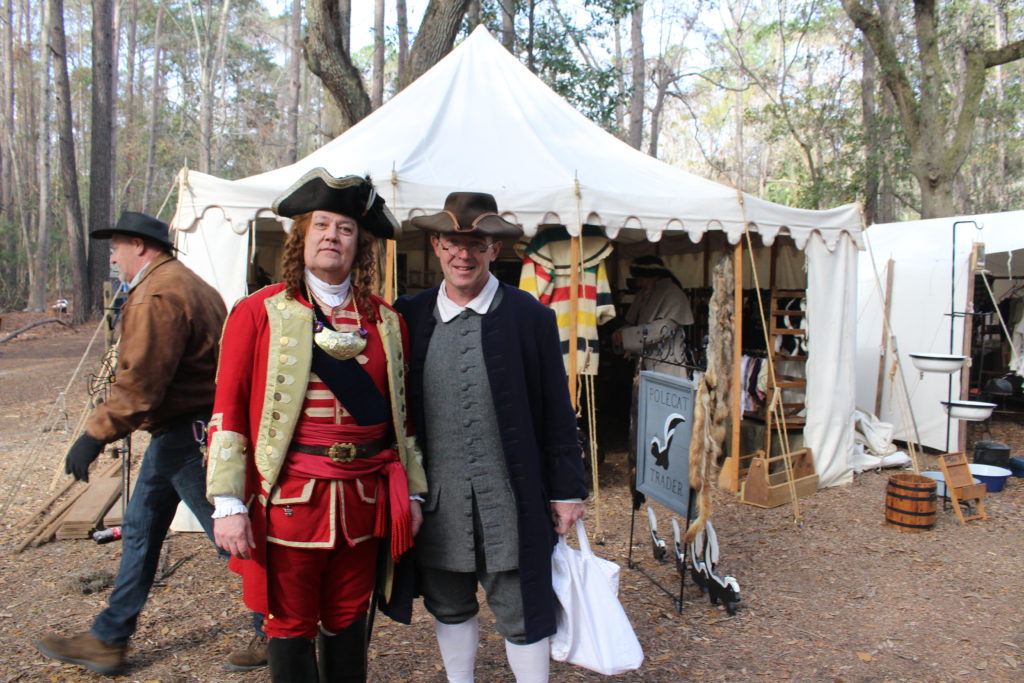
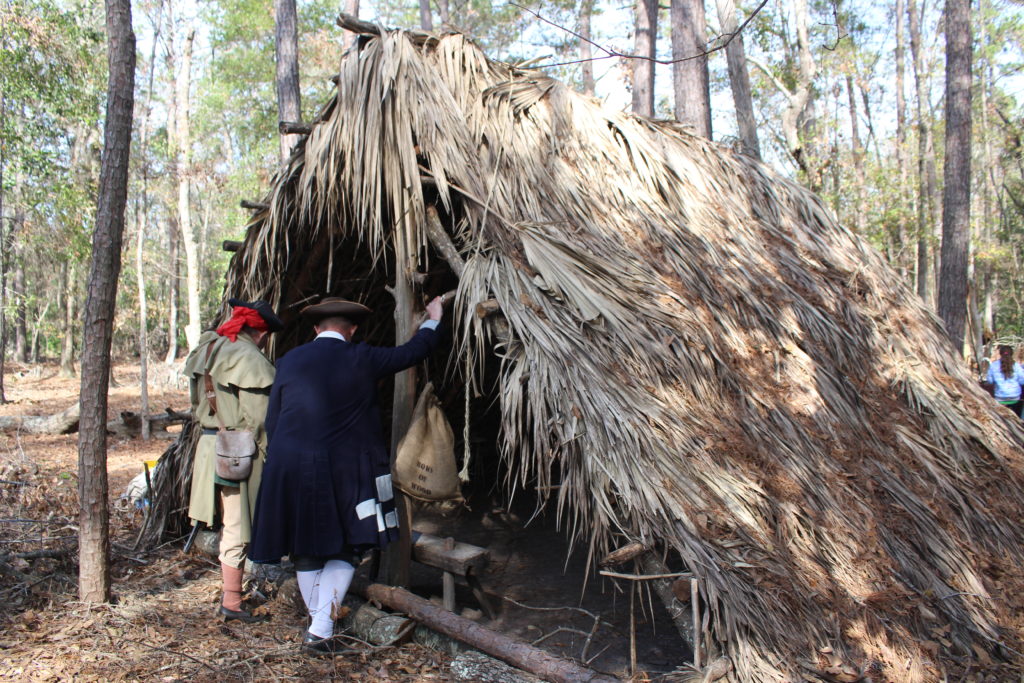
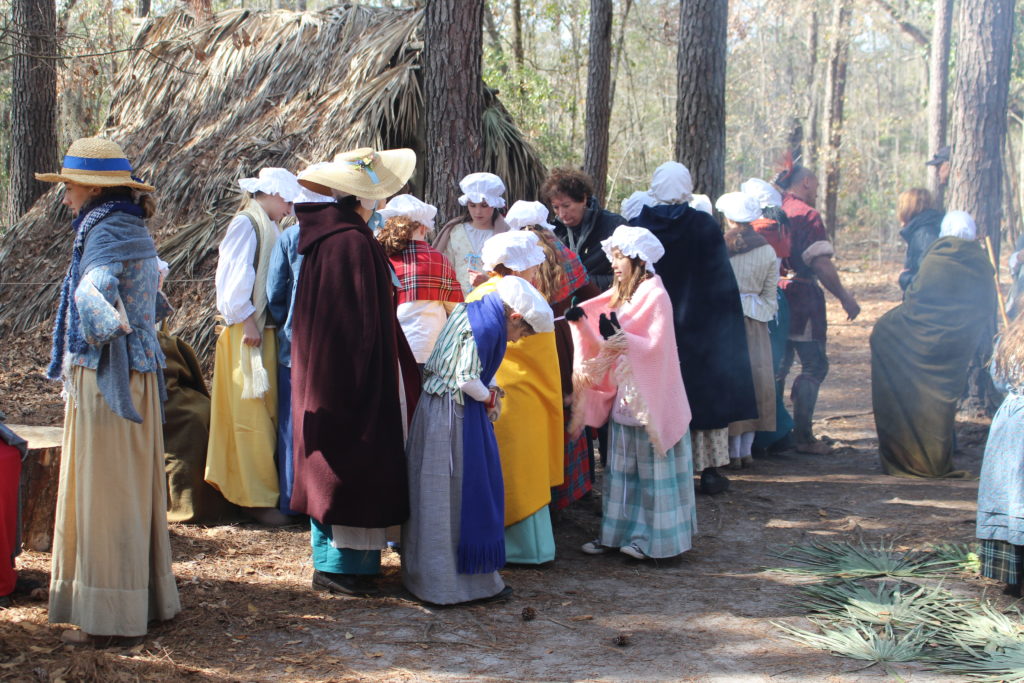
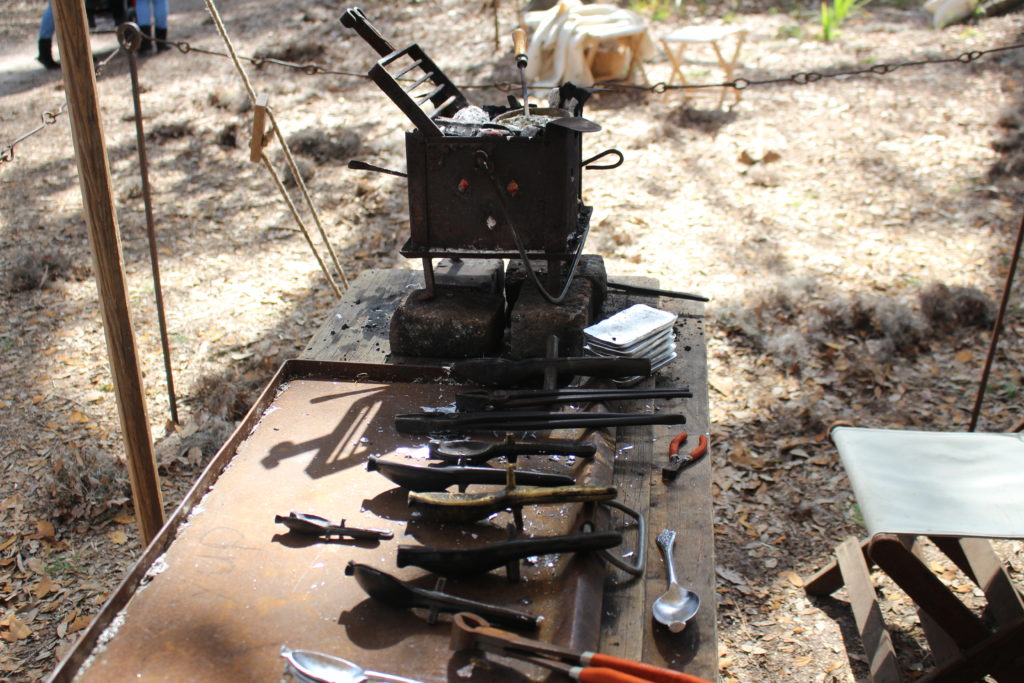
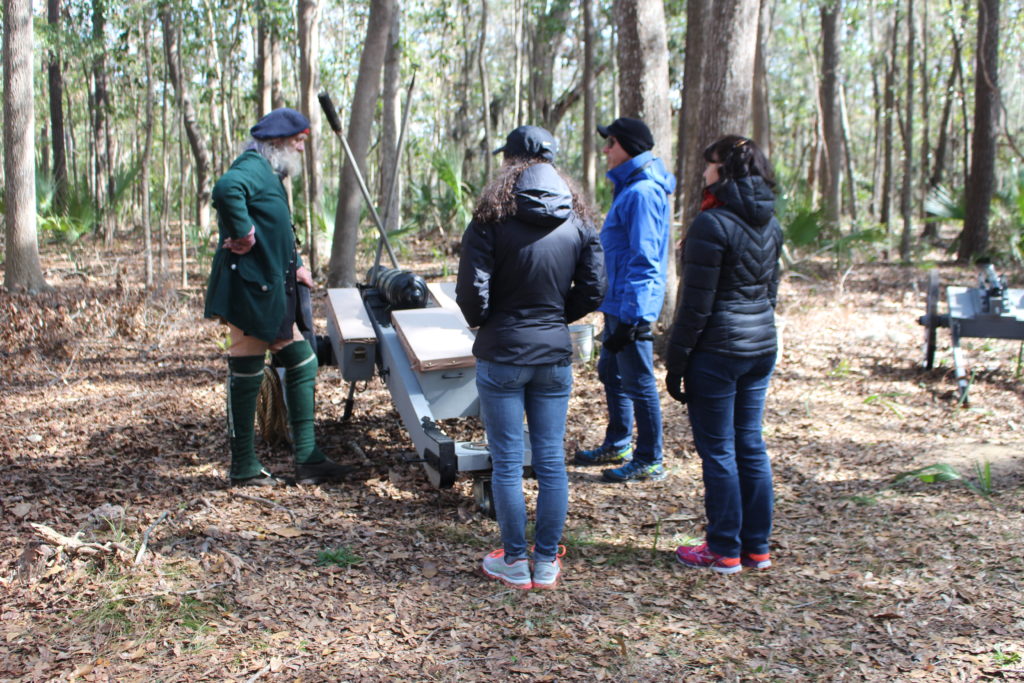

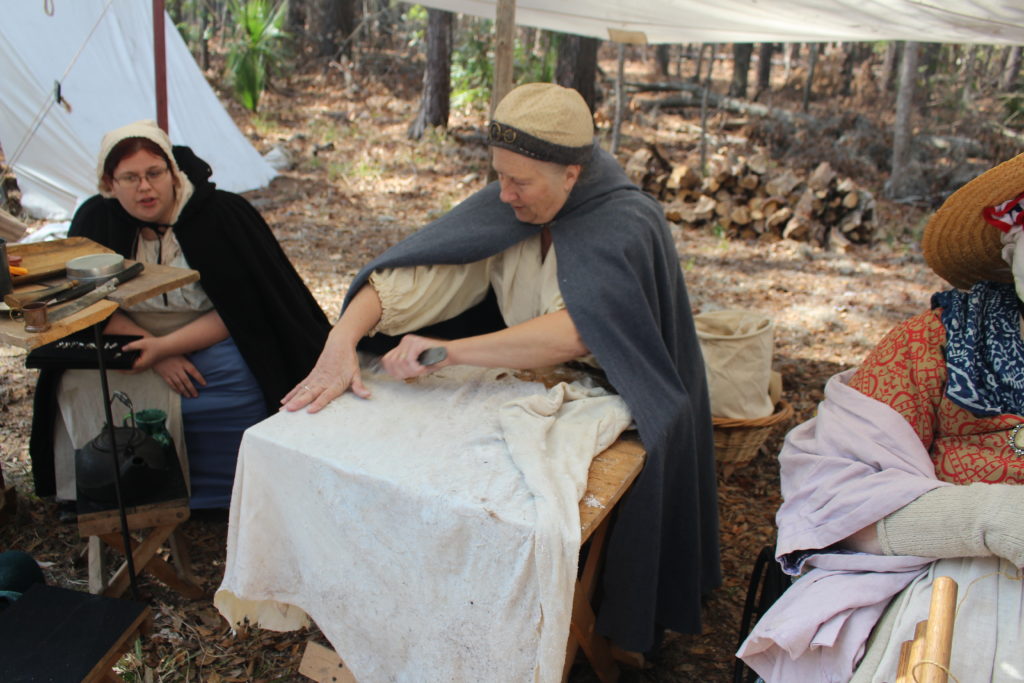
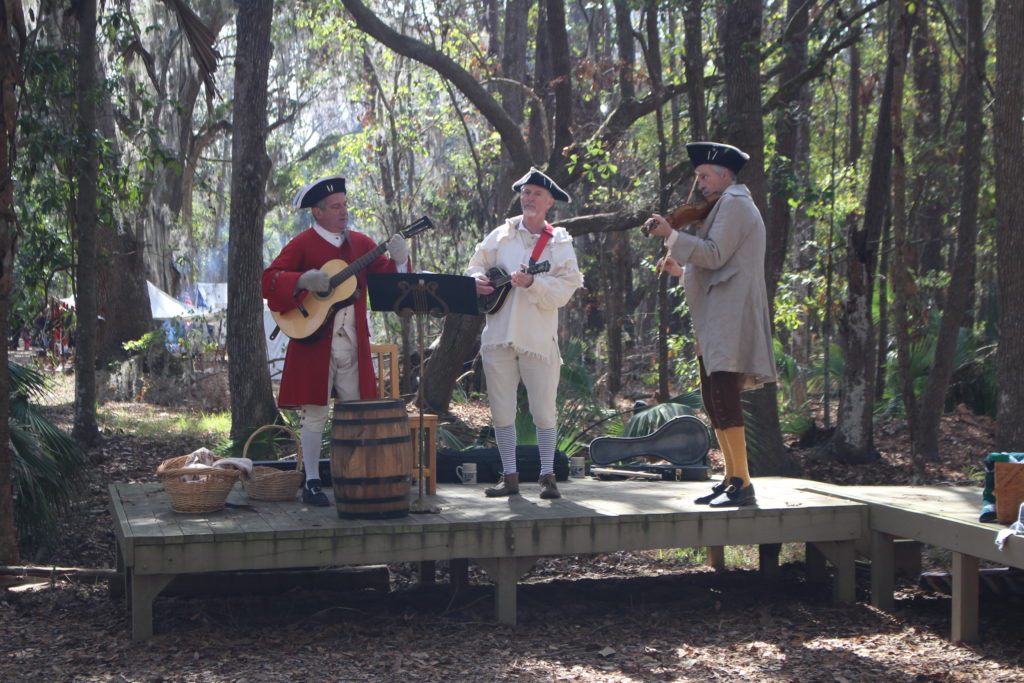
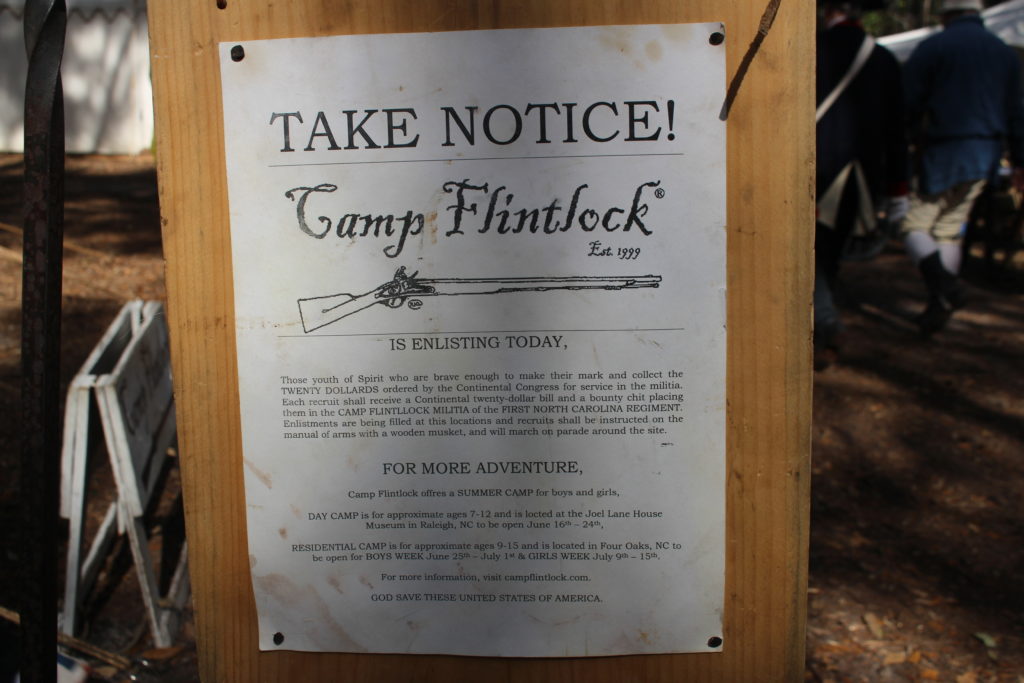
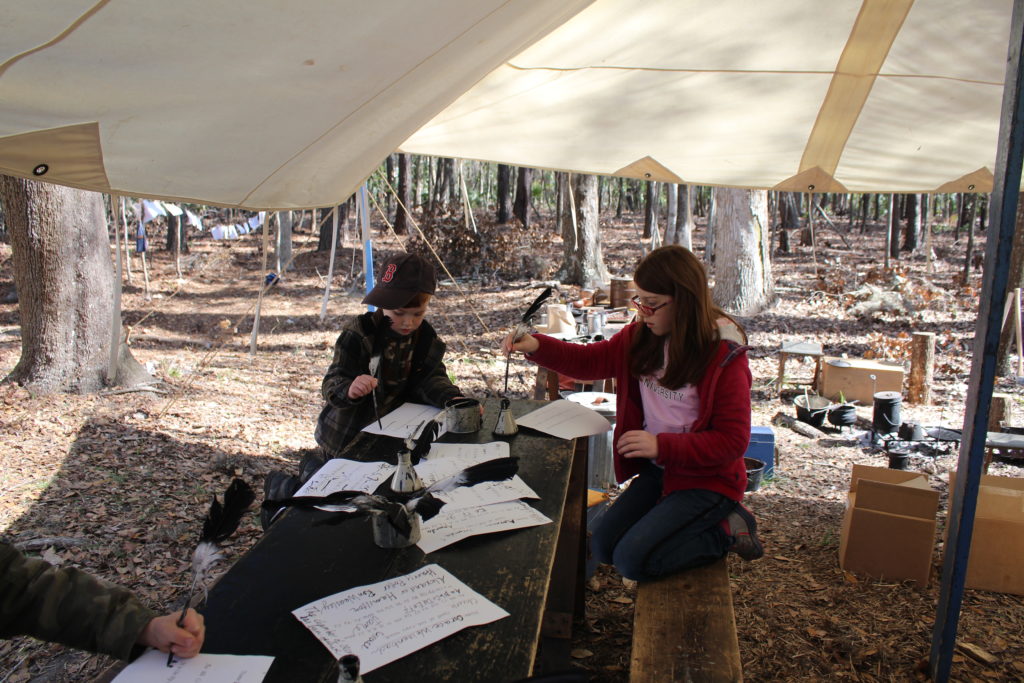
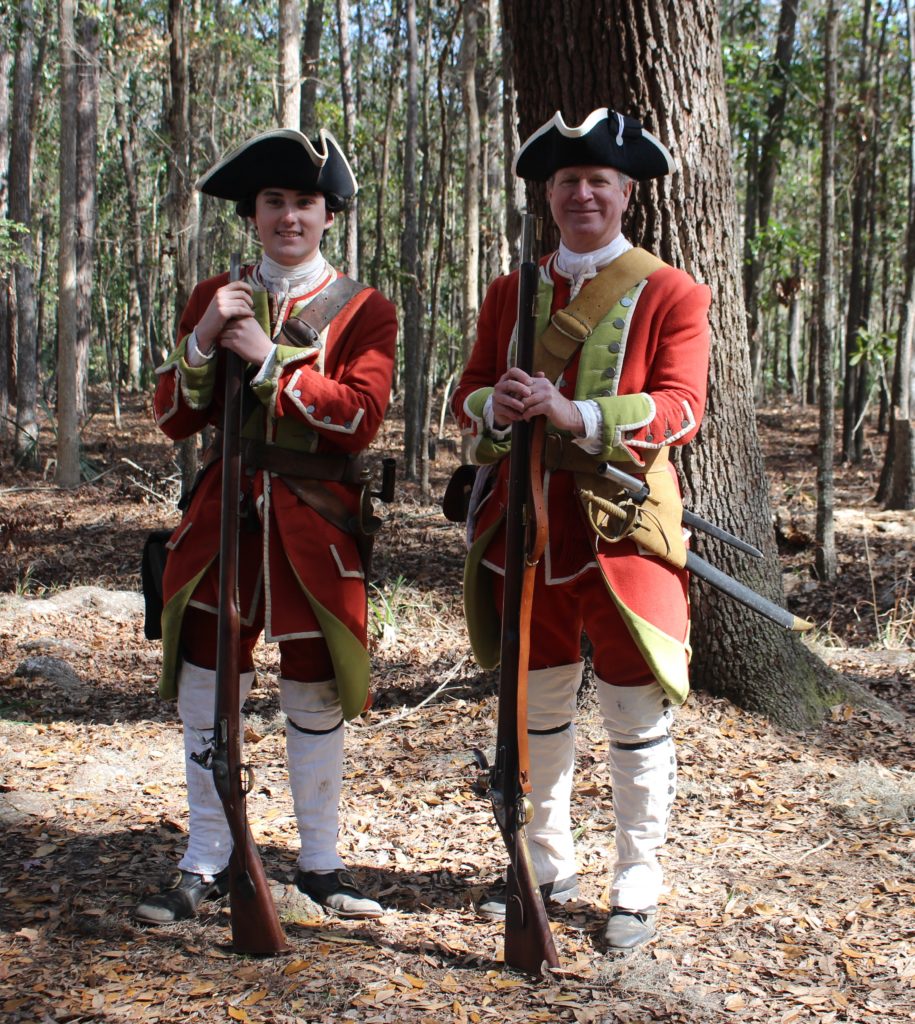
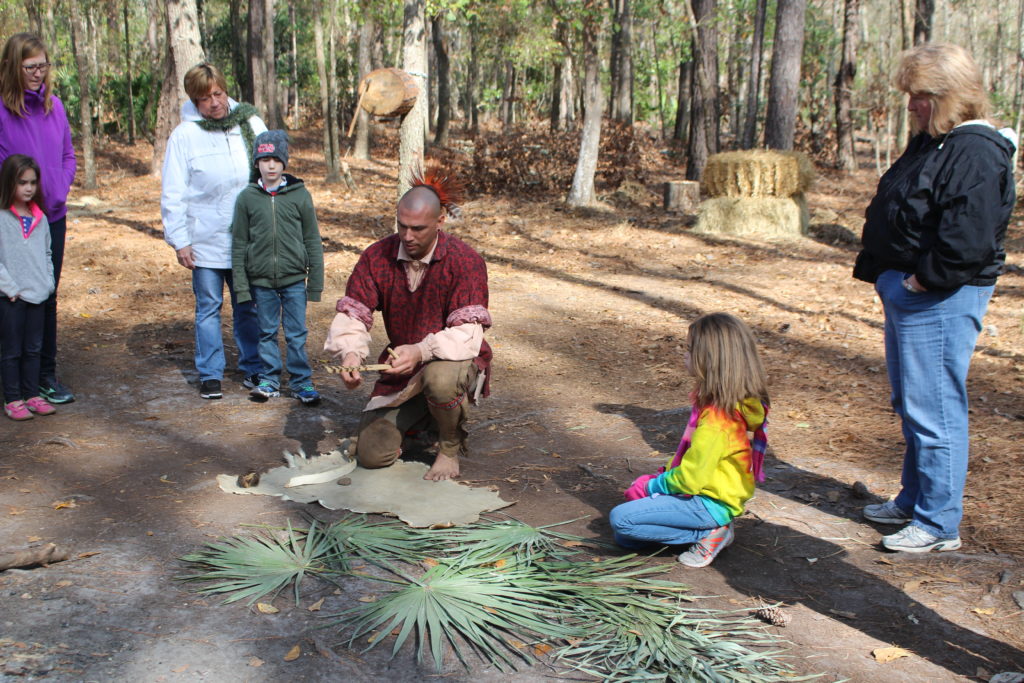
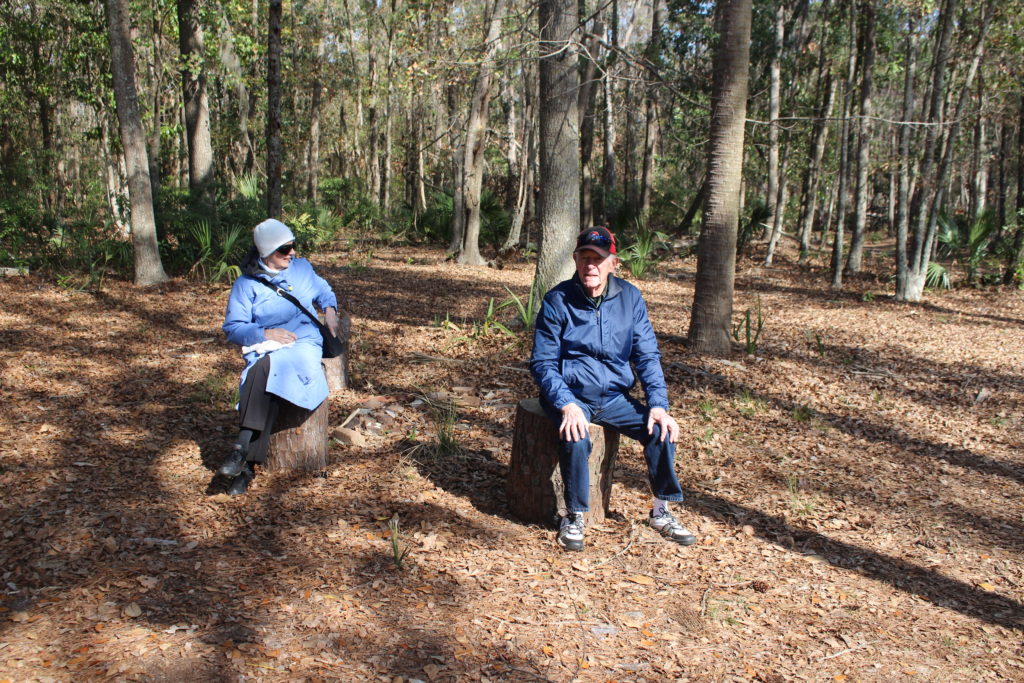
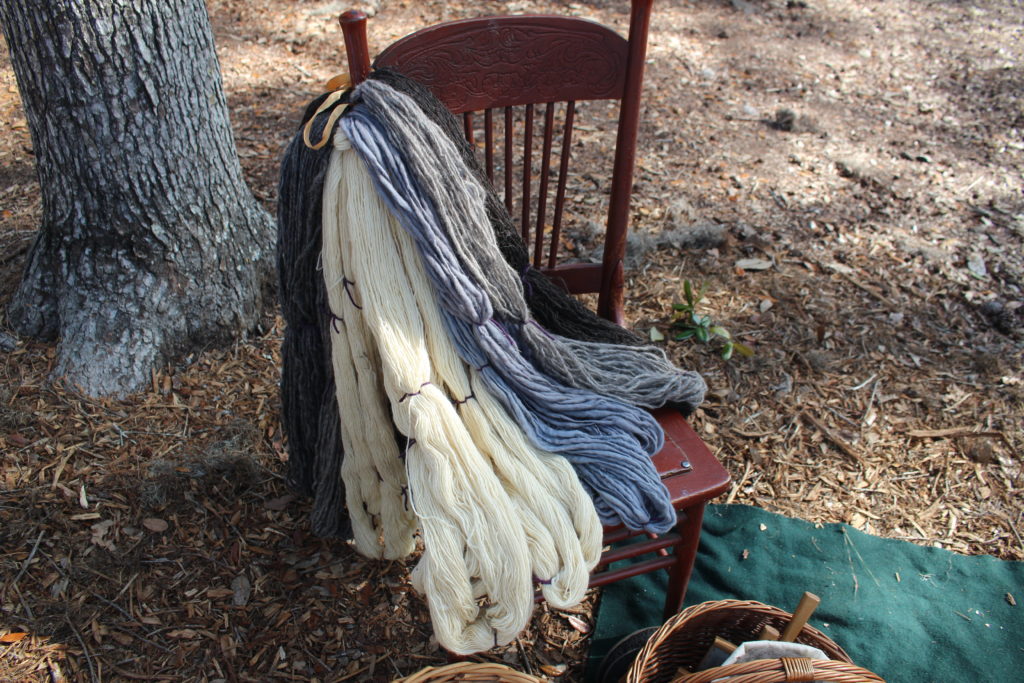

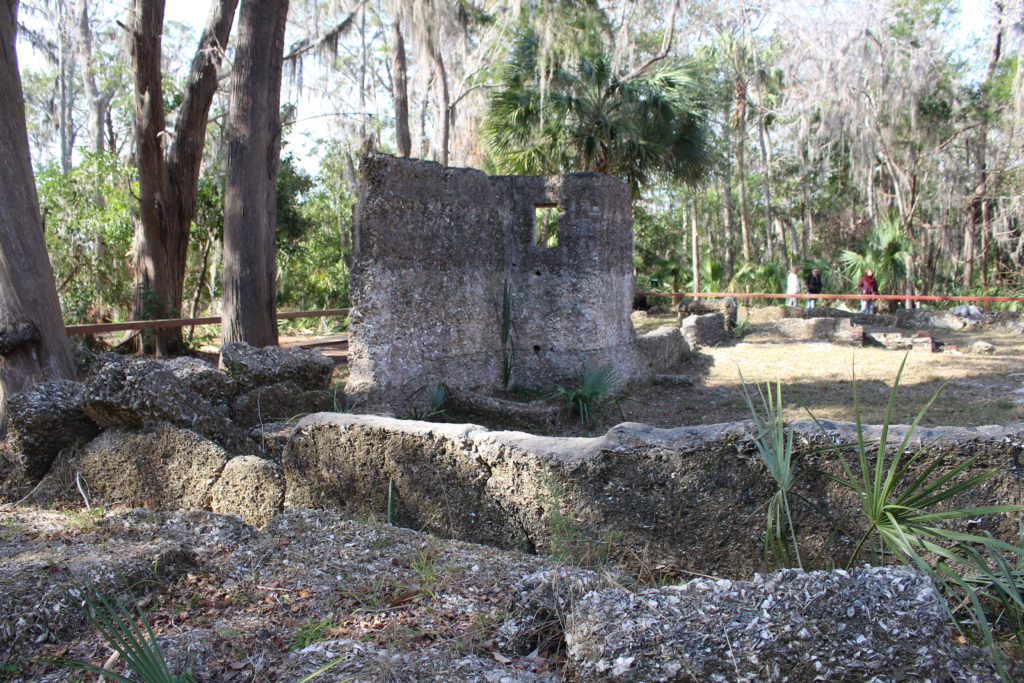
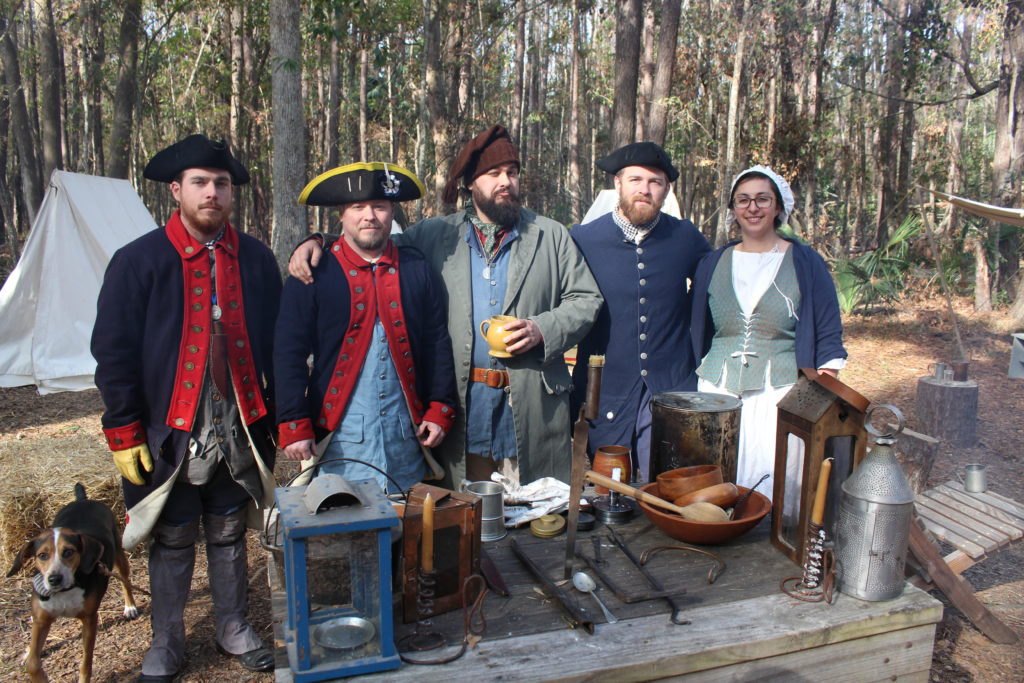
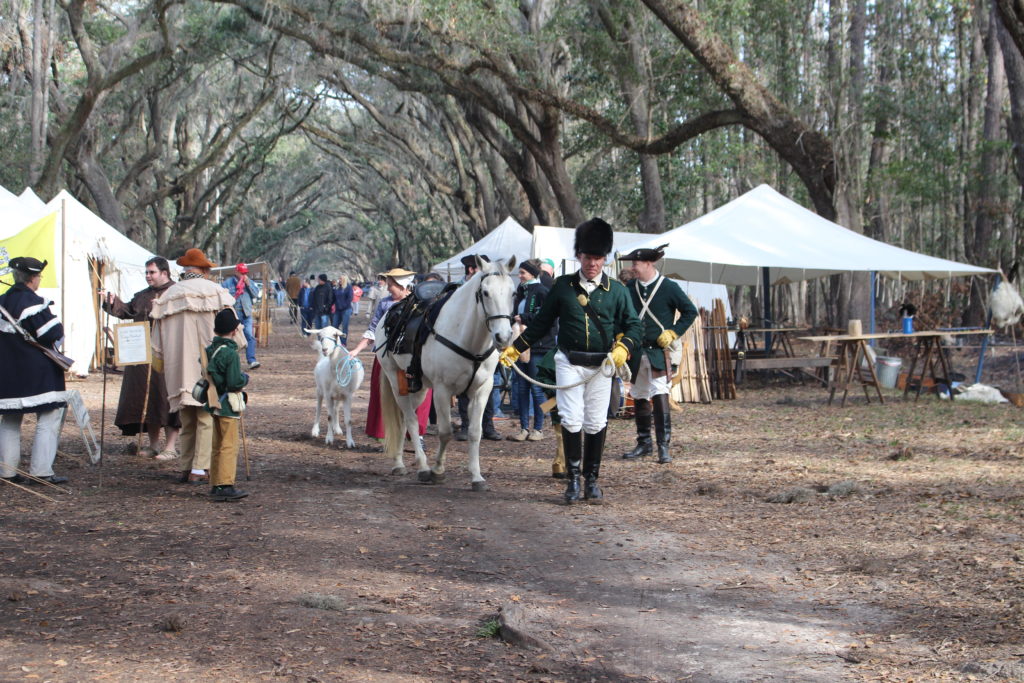
One comment